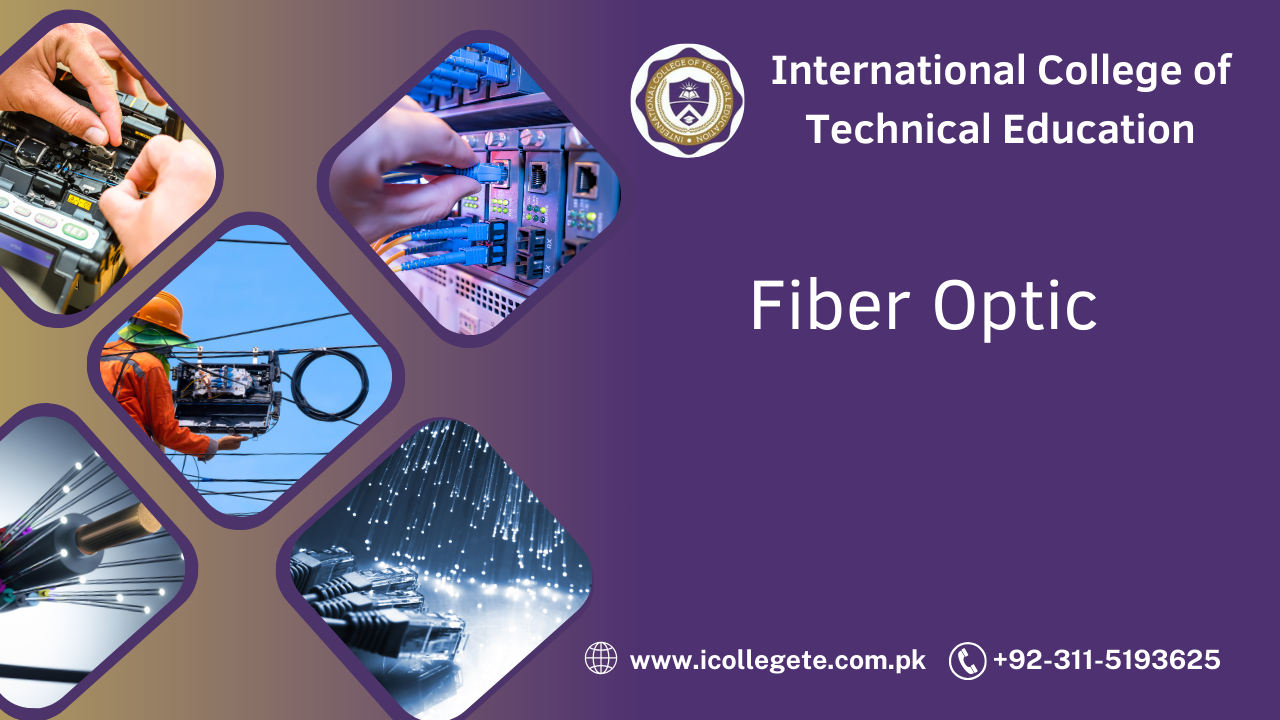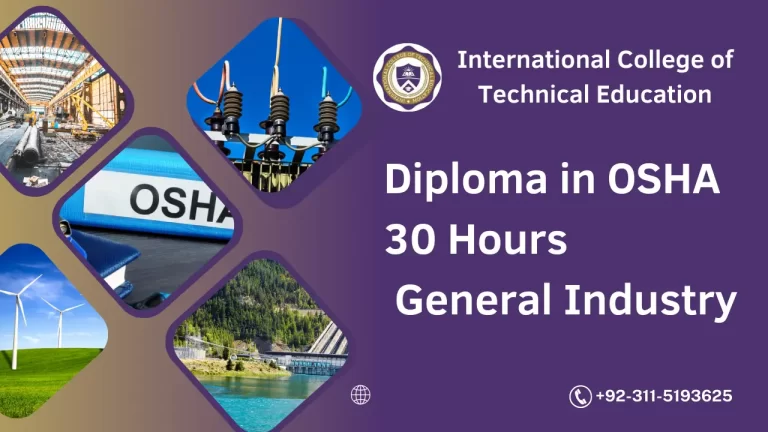In today’s digital age, high-speed communication is vital, and fiber optics have revolutionized the way we transmit data. Fiber optic technology has become the backbone of internet connections, telecommunications, and modern communication systems. As businesses and industries increasingly rely on fiber optic networks, skilled professionals who can design, install, maintain, and troubleshoot these systems are in high demand.
The Fiber Optic Course in Attock is designed to equip students with the technical knowledge and practical skills required to work with fiber optic systems. This course offers an in-depth understanding of fiber optic theory, installation, testing, and troubleshooting techniques. By combining theoretical concepts with hands-on training, the course ensures that students are well-prepared to work in a variety of industries that rely on fiber optic communication networks.
Course Overview
The Fiber Optic Course in Attock covers all essential aspects of fiber optic technology, starting from the basics of light transmission to advanced installation and maintenance practices. Students will learn about different types of fiber optic cables, tools and equipment used for installation, and testing methods to ensure optimal performance. Additionally, the course will cover the safety protocols involved in working with fiber optic systems, preparing students for real-world challenges in a safe and effective manner.
The course is designed for individuals who want to enter the telecommunications, networking, and IT industries, as well as those who wish to enhance their existing skills in fiber optic technology.
Study Units
The Fiber Optic Course is divided into several study units that provide comprehensive knowledge and practical skills:
- Introduction to Fiber Optic Technology
- Basics of fiber optic communication and light transmission
- Understanding the structure of fiber optic cables and their components
- Types of fiber optics: single-mode vs. multi-mode fibers
- Fiber Optic Components and Tools
- Overview of fiber optic components (connectors, splices, amplifiers, etc.)
- Tools used for installation, testing, and maintenance (cleavers, strippers, splicing machines, etc.)
- Selection of appropriate tools for different fiber optic applications
- Fiber Optic Cable Installation
- Proper techniques for installing fiber optic cables
- Safety protocols when handling fiber optic cables
- Cable routing, securing, and protection methods for optimal installation
- Fusion Splicing and Mechanical Splicing
- Understanding fusion splicing: techniques, equipment, and safety considerations
- Mechanical splicing methods and applications
- Hands-on practice in performing both fusion and mechanical splicing
- Testing and Troubleshooting Fiber Optic Networks
- Using optical time-domain reflectometers (OTDR) and power meters
- Conducting fiber optic cable tests to ensure proper functionality
- Identifying and troubleshooting common fiber optic network issues (signal loss, attenuation, etc.)
- Maintenance and Repair of Fiber Optic Systems
- Routine maintenance procedures for fiber optic systems
- Identifying, isolating, and repairing damaged fiber optic cables
- Ensuring long-term reliability and performance of fiber optic networks
Learning Outcomes
By the end of the Fiber Optic Course in Attock, students will be able to:
- Understand the fundamental principles of fiber optic communication and how light transmission works within fiber optic cables.
- Install, splice, and connect fiber optic cables with industry-standard methods and tools.
- Test and evaluate fiber optic networks using specialized testing equipment to ensure optimal performance.
- Troubleshoot and repair common issues in fiber optic systems, including signal loss, cable damage, and network failures.
- Work safely with fiber optic systems, adhering to industry safety standards and protocols.
- Provide regular maintenance and support for fiber optic networks, ensuring their reliability and longevity.
Course Benefits
- In-Depth Knowledge: Students will gain a comprehensive understanding of fiber optic technology, including theory, installation practices, testing methods, and troubleshooting techniques.
- Hands-On Experience: The course emphasizes practical learning, giving students hands-on experience with fiber optic cables, tools, and testing equipment. This prepares them for real-world applications.
- Industry-Recognized Certification: Upon successful completion of the course, students receive a certification that is recognized within the telecommunications and networking industries, improving their job prospects.
- High-Demand Skills: Fiber optic technology is widely used in industries such as telecommunications, IT, broadcasting, and internet service providers. Completing this course opens up a wide range of job opportunities in these sectors.
- Career Advancement: The course not only prepares you to enter the field but also offers opportunities for career growth. Whether you’re looking to specialize in fiber optics or pursue advanced roles, the skills you gain will be valuable in a variety of industries.
- Job Readiness: Graduates are equipped with the skills necessary to begin working in the fiber optic industry immediately, reducing the learning curve and improving employability.
Who is This Course For?
This course is ideal for:
- Aspiring Fiber Optic Technicians: If you are looking to start a career in fiber optics, this course provides you with all the foundational skills and knowledge needed to get started.
- Telecommunications and Networking Professionals: If you already work in telecommunications or IT and want to specialize in fiber optic technology, this course will enhance your skill set and open up new career opportunities.
- Electricians and Technicians: Professionals in the electrical or mechanical fields who want to broaden their expertise and enter the rapidly growing fiber optic industry can benefit from this course.
- Tech Enthusiasts: Individuals who are passionate about modern communication technologies and want to be part of the growing fiber optic industry.
Future Progression
After completing the Fiber Optic Course in Attock, there are numerous career progression opportunities available:
- Fiber Optic Technician: Graduates can work as fiber optic technicians, responsible for installing, testing, and maintaining fiber optic cables and networks in various industries.
- Network Engineer: With additional training, you can become a network engineer specializing in fiber optic networks, responsible for the design, implementation, and maintenance of high-speed communication systems.
- Telecommunications Specialist: Work in the telecommunications sector, focusing on fiber optic systems and networks to ensure high-speed and reliable communication services.
- Fiber Optic Consultant: Experienced professionals may choose to work as consultants, offering expertise and advice on the design, installation, and maintenance of fiber optic systems for businesses and organizations.
- Project Manager: With experience, graduates can move into project management roles, overseeing fiber optic installation projects and managing teams of technicians and engineers.
- Entrepreneurship: Skilled professionals may choose to start their own fiber optic installation and maintenance business, serving the growing demand for fiber optic networks in both urban and rural areas.
The Fiber Optic Course in Attock is an excellent opportunity for anyone looking to enter the rapidly growing field of fiber optic technology. With comprehensive training, hands-on experience, and industry-recognized certification, this course offers the skills necessary to thrive in the high-speed communication sector. Whether you’re starting a new career or looking to specialize, this course provides the tools to succeed in a fast-evolving industry.







